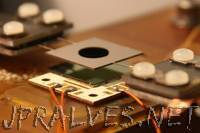
“A team of MIT researchers has for the first time demonstrated a device based on a method that enables solar cells to break through a theoretically predicted ceiling on how much sunlight they can convert into electricity. Ever since 1961 it has been known that there is an absolute theoretical limit, called the Shockley-Queisser Limit, to how efficient traditional solar cells can be in their energy conversion. For a single-layer cell made of silicon — the type used for the vast majority of today’s solar panels — that upper limit is about 32 percent. But it has also been known that there are some possible avenues to increase that overall efficiency, such as by using multiple layers of cells, a method that is being widely studied, or by converting the sunlight first to heat before generating electrical power. It is the latter method, using devices known as solar thermophotovoltaics, or STPVs, that the team has now demonstrated.”
